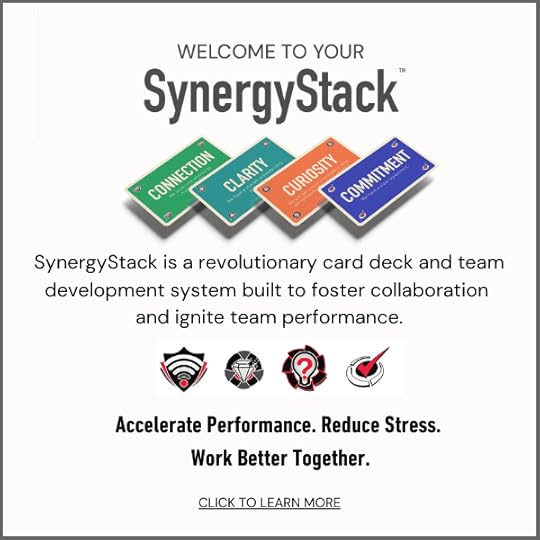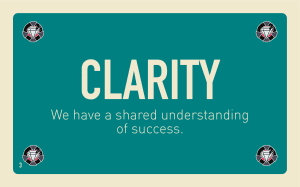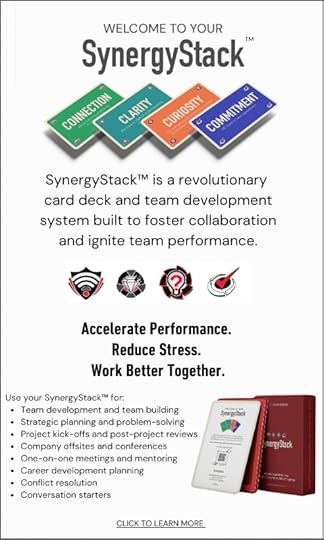David Dye's Blog, page 18
July 26, 2024
The Ultimate Guide to Having Brave Conversations at Work
Episode 264: In this episode of the Leadership Without Losing Your Soul Podcast, you’ll dive into the importance of brave conversations at work and tackling those tough conversations head-on. Have you ever wondered how to make those difficult chats a little easier? Ed Evarts joins us to share his insights and experiences navigating these tricky waters.
You’ll learn about the key elements that can make a big difference. Some of those include being helpful, practicing regularly, staying present in the moment, focusing on future outcomes, and maintaining flexibility. Plus, don’t miss out on Ed’s book, “The Bravery Trick for Easy Ways to Say Hard Things,” which is packed with practical tips and is available now. Tune in to get inspired and become more courageous in your leadership journey!
How to Have Brave Conversations with Ed Evarts00:00 – Show Introduction and Importance of Brave Conversations
David Dye emphasizes the significance of brave conversations at work, highlighting how well-received feedback can create a culture of openness and improvement.
00:23 – Welcome and Episode Overview
David welcomes you to Leadership without Losing Your Soul, promising practical strategies for brave conversations. David introduces returning guest Ed Evarts.
01:36 – Ed Everats’ Early Leadership Experiences
Ed shares his early leadership memories influenced by his father, stressing the importance of observational skills and continuous improvement.
02:58 – The Connection Between Observational Skills and Brave Conversations
David and Ed discuss how early experiences of observing and improving processes connect to the need for bravery in workplace conversations.
03:53 – Common Areas Where Bravery is Needed at Work
Ed identifies two types of bravery: planned and in-the-moment, explaining why people often miss opportunities to be brave in meetings and feedback situations.
04:42 – Examples of Missed Opportunities for Bravery at Work
Ed gives examples of people avoiding speaking up in meetings or giving feedback. This leads to regrets about not being brave when it matters.
05:39 – The Goal of Helpfulness in Brave Conversations
Emphasizing that bravery should always aim to help; Ed outlines the importance of approaching conversations with a mindset of helpfulness and dignity.
06:36 – Overcoming the Fear of Public Speaking
David shares how focusing on being helpful rather than perfect can alleviate the fear of public speaking.
07:25 – Flipping the Script on Difficult Conversations
Ed advises flipping the script to focus on the benefits of brave conversations rather than the reasons to avoid them, enhancing the likelihood of successful outcomes.
08:41 – The Value of Practice in Brave Conversations
Ed explains how preparing and rehearsing conversations can make you more confident and effective in being brave at work.
The post The Ultimate Guide to Having Brave Conversations at Work appeared first on Let's Grow Leaders.
How to Find More Joy at Work and Disrupt the Monotony
Are you looking for more joy in your work? Has work gotten monotonous? Does today feel too much like yesterday?
Important work is hard. And sometimes repetitive tasks are a vital part of the gig. But if your job feels monotonous and boring, find ways to mix it up and find more joy.
3 Ways to Break the Disrupt the Monotony and Find More Joy at WorkHere are a few places to start to find more joy at work. Or, what I’ve learned to call “skipping to work.”

Much of the research on joy at work points to the satisfaction that comes from making a meaningful contribution.
An easy place to start is to pay attention to why the work you are already doing matters– and who it helps.
From there, consider if there are other areas you can go a level deeper. Maybe you can teach a co-worker, share an idea, or find a new way to delight customers who walk through the door.
You might find joy in knowing you’re making a bigger impact for the humans you are working with, to your customers, or to improving your organization.
2. Invest in deeper building human connectionsThink beyond an intention, and make a plan. You can pick a few relationships and deliberately invest in getting to know them at a human level. Show up interested (in them) and interesting (be easy to get to know).
You can even combine #1 contributing with building connection– and get up to something significant with a co-worker. Some of my best work memories from my time at Verizon (and lasting relationships) came from collaborating on projects we both cared about.
3. Do something that scares you (or at least challenges you).When you’re stretched and growing, the endorphins kick in. If your work is feeling monotonous or lacking joy, talk to your manager about ways you can step out of your comfort zone and try something new.
It could be preparing for a new role, or taking on a special project, or going deeper in the work you currently do.
4. _________________ Your turn. What advice do you have for someone looking for more joy at work?
The post How to Find More Joy at Work and Disrupt the Monotony appeared first on Let's Grow Leaders.
How to Find More Joy at Work and Distrupt the Monotony
Are you looking for more joy in your work? Has work gotten monotonous? Does today feel too much like yesterday?
Important work is hard. And sometimes repetitive tasks are a vital part of the gig. But if your job feels monotonous and boring, find ways to mix it up and find more joy.
3 Ways to Break the Disrupt the Monotony and Find More Joy at WorkHere are a few places to start to find more joy at work. Or, what I’ve learned to call “skipping to work.”

Much of the research on joy at work points to the satisfaction that comes from making a meaningful contribution.
An easy place to start is to pay attention to why the work you are already doing matters– and who it helps.
From there, consider if there are other areas you can go a level deeper. Maybe you can teach a co-worker, share an idea, or find a new way to delight customers who walk through the door.
You might find joy in knowing you’re making a bigger impact for the humans you are working with, to your customers, or to improving your organization.
2. Invest in deeper building human connectionsThink beyond an intention, and make a plan. You can pick a few relationships and deliberately invest in getting to know them at a human level. Show up interested (in them) and interesting (be easy to get to know).
You can even combine #1 contributing with building connection– and get up to something significant with a co-worker. Some of my best work memories from my time at Verizon (and lasting relationships) came from collaborating on projects we both cared about.
3. Do something that scares you (or at least challenges you).When you’re stretched and growing, the endorphins kick in. If your work is feeling monotonous or lacking joy, talk to your manager about ways you can step out of your comfort zone and try something new.
It could be preparing for a new role, or taking on a special project, or going deeper in the work you currently do.
4. _________________ Your turn. What advice do you have for someone looking for more joy at work?
The post How to Find More Joy at Work and Distrupt the Monotony appeared first on Let's Grow Leaders.
July 22, 2024
Attention to Detail: How to Help Your Team Have Less “Oops” Moments
If you’re reading this article, you know how much attention to detail matters. There’s not much more infuriating than a consistent stream of sloppy mistakes.
You’re not trying to micro-manage. You don’t have time for that. But every time you catch a mistake it confirms your need to triple-check your team’s work. Plus, you’re a human-centered leader, and you don’t want to overreact to one small thing. But small issues add up and damage your ability to trust your team.
So how do you get your team to sweat the small stuff as much as you do, without coming across as a jerk?
7 Ways to Build an Attention-to-Detail CultureHelp your team understand why attention to detail matters and how to do it well.
1. Set Clear ExpectationsBe clear about your expectations and why they matter. Explain what sloppy mistakes communicate to your customers, stakeholders, and to the rest of the team. Get specific about what meticulous work looks like with examples.
Of course, they SHOULD know this stuff. But if you want to make attention to detail a habit, get specific.
For example:
Before you share a spreadsheet, ensure you’ve double-checked all the formulas.Greet every customer with a warm smile and offer to help.Run your writing through a grammar tool before submitting.If you’re using a template, be sure what you’ve created makes sense for this customer or situation.2. Demonstrate Your ProcessDemonstrate the behaviors you want to see. Show them how you check your work, ask clarifying questions, and ensure precision in every task.
For example, “When I review a customer communication like this, here are the steps I follow and the questions I ask myself before I consider it done…”
You can also flip the script and have them walk you through their process.
Talking through a process out loud is one of the fastest ways to help a team member discover a missing step or come up with an idea to improve the quality of their work.
3. Create Processes and ChecklistsAnother great way to encourage attention to detail is to create processes and checklists for recurring tasks. Even better, encourage your team to develop checklists and share them.
Of course, you’ve got to ensure these checklists stay up to date– and that your team stays on the lookout for better ways to do things.
Encourage your team to meet to discuss what’s working and to suggest improvements. This ongoing dialogue helps maintain high standards and adapt to new challenges.
4. Use Technology CarefullyUsed well, tools like project management software, automated checklists, and collaborative platforms are great ways to ensure tasks are completed accurately and on time.
Just be careful that your team isn’t outsourcing functions to AI without checking the quality. Every day we hear from frustrated managers reviewing the “crap” their team has given them by using AI carelessly.
5. Provide Training and ResourcesIn addition to setting clear expectations on what matters, be sure your team knows HOW to focus on the details, as well as how to manage their time to prevent frenetic scurries that lead to mistakes.
One practical time-saving communication tool is the “check for understanding”. When you teach every team member to ensure the message sent is the message received, you can save a lot of time in rework or details slipping through the cracks.
6. Build a Peer Quality Check ProcessYou don’t always have to be the checker. Set an expectation that nothing comes to you without a peer review. Having another set of eyes on a project catches errors, improves quality, and offers different perspectives. This practice improves the quality of work and fosters a collaborative environment where team members learn from each other.
Plus, building a peer review process is another way to communicate how important quality checks are.
“On our team, quality matters. And we’re in this together.”
7. Recognize Excellence and Foster AccountabilityAcknowledge and reward team members who consistently demonstrate great attention to detail. You get more of what you encourage and celebrate and less of what you ignore. Help your team to celebrate one another as part of their peer review process. When a co-worker checks the work and finds no concerns, celebrate that win.
You can also foster a culture of team accountability by training your team on specific techniques to hold one another accountable and techniques to talk about concerns when processes break down. On the highest-performing teams, accountability is a team sport.
These seven strategies will help your team pay more attention to detail, resulting in less stress, better outcomes, and happier everybody.
What would you add? What are some of your favorite ways to help your team get it right the first time?
The post Attention to Detail: How to Help Your Team Have Less “Oops” Moments appeared first on Let's Grow Leaders.
July 19, 2024
Leading with Kindness: Creating a Positive Culture in the Workplace
Episode 263: Nick Courtright, founder and CEO of Atmosphere Press, a hybrid publishing company, discusses his approach to leadership and creating a positive culture at his company. He emphasizes hiring for kindness and creating a positive and supportive author environment. Courtright shares that his company has 24 guiding principles, including a good sense of humor, and prioritizes the author’s experience. He also discusses the importance of accountability, taking responsibility for mistakes, and the value of employee development and growth. Courtright encourages you as leaders to remember the meaningfulness of your work and to show care and respect to your customers.
Building a Positive Culture: Insights from Leadership Without Losing Your Soul(00:00 – 00:19)
You start by always hiring for kindness and patience. At Atmosphere Press, we need team members to be responsive, encouraging, and upbeat, with a good sense of humor. These traits are integral to our positive culture, guided by 24 principles that shape our environment.
(00:20 – 01:11)
David introduces the podcast, “Leadership Without Losing Your Soul,” now in its 17th season. Today’s guest, Nick Courtright, founder and CEO of Atmosphere Press, will discuss human-centered leadership and the unique positive culture at his company.
(01:12 – 03:14)
Nick shares his earliest memory as a leader. Being the oldest of six siblings, he naturally took on leadership roles, albeit not always with enlightened methods. These experiences taught him valuable lessons in leading and encouraging others positively.
(03:15 – 05:42)
David and Nick bond over their shared experiences as the oldest siblings. They reflect on how childhood leadership methods, although unrefined, contributed to their growth and understanding of positive leadership and the importance of a supportive culture.
(05:43 – 08:02)
Nick narrates his unexpected journey to becoming a CEO. Initially a writer and academic, he transitioned into publishing when he helped an author publish a book. This shift led to the founding of Atmosphere Press, where he emphasized a positive, author-centric culture.
(08:03 – 11:07)
Atmosphere Press is a hybrid publishing company. Nick explains how their author-first approach contrasts with traditional publishing. Their model ensures that authors retain rights and royalties, fostering a positive culture where authors feel valued and supported.
(11:08 – 13:38)
Nick highlights the importance of kindness in their company culture. They hire individuals who are encouraging, patient, and have a good sense of humor. This positive culture ensures authors receive constructive feedback and support throughout their publishing journey.
(13:39 – 17:20)
David shares a personal anecdote about the impact of positive feedback on authors. Nick emphasizes that their team’s kindness and encouragement are crucial in maintaining a positive culture that respects and uplifts authors, even when delivering constructive criticism.
(17:21 – 21:32)
Nick discusses Atmosphere Press’s guiding principles, such as transparency and kindness. These principles create a positive culture, ensuring ethical interactions with authors and fostering trust and respect. Their transparent contract and ethical practices set them apart.
(21:33 – 25:55)
David and Nick delve into the potential conflicts between guiding principles and how to balance them. Nick explains that while some principles may conflict, it’s essential to use intuition and context to navigate these situations, always prioritizing the company’s core values.
(25:56 – 31:41)
Nick shares how he fosters a positive culture within his team by promoting cross-training and skill development. He encourages employees to explore new roles and responsibilities, ensuring they stay engaged and motivated. This approach nurtures a positive and dynamic work environment.
(31:42 – 34:51)
David and Nick explore the importance of acknowledging mistakes and taking responsibility. At Atmosphere Press emphasizes accountability and creates a safe space for employees to own their errors. This practice reinforces a positive culture of trust and continuous improvement.
(34:52 – 44:29)
In conclusion, Nick underscores the principle of remembering how meaningful the work is. This North Star principle guides Atmosphere Press’s positive culture, ensuring that everyone remains dedicated to providing the best possible care and support to their authors.
The post Leading with Kindness: Creating a Positive Culture in the Workplace appeared first on Let's Grow Leaders.
July 15, 2024
Workplace Communication: Stop Asking “Do You Understand?” (and do this instead)
When your organization or team communicates effectively, you’re nimble. You can respond to change quickly. But if your organization doesn’t invest in effective workplace communication, you’ll face a constant series of misunderstandings that waste time, create conflict, and drag down everyone’s performance. One easy-to-use workplace communication tool will eliminate most of these frustrations, save you time, and improve performance and morale.
Stop Asking “Do You Understand?”Every moment of communication with your team or customer is precious. Especially in hybrid, remote, or fast-moving organizations, you’ve got to make every interaction count.
But one of the worst ways to waste these precious moments is by asking, “Do you understand?”
If the person answers “yes”—well, you know nothing more than you did before you asked. They said “yes,” but what does that “yes” actually mean?
Maybe they think they understand (and whether they do or not, you don’t know). Or maybe they just told you yes because that’s what they think you expect to hear.
Perhaps they just want to move on and get to their next task, so they say “yes” hoping to leave the conversation.
Regardless of the person’s intent, when someone tells you, “yes, I understand,” you know nothing more than you did before you asked. And you rarely learn about problems in understanding until later when things go wrong.
Now, if they tell you “no, I don’t understand,” that is better in the sense that now you have new information. But you still don’t know where the confusion happened or what to do about it. And it required the person you asked to have the courage to admit they didn’t understand (which shouldn’t take courage, but often does).
Maximize Your Workplace Communication ROI: Check for UnderstandingYou can make the most of every conversation and eliminate hours, days, even months of frustration, headache, and heartache by shifting away from “do you understand?” Instead, ask an open-ended question that helps both of you immediately figure out how well you grasp what one another has said. We call this a “check for understanding.”
Check for Their Understanding
When you check for understanding, ask the other person what they understand (not if they understand). There are many ways you can do this. Here are a few examples:
“Let’s check for understanding here, what are the next steps we will take?”“I’d like to make sure we’re on the same page. What’s happening now?”“What’s your understanding of our agreement?”All of these questions are open ended – the person answering will share what they know. There is no yes/no pressure to be right. It’s about sharing their perspective so we can move forward efficiently.
As you hear them summarize in their words, you’ll know what they know and where they are missing critical information. Now you can clarify and ensure everyone has what they need.
Check for Your UnderstandingWhen you are on the receiving end of communication from a colleague, team member, supervisor, board member, spouse, child, friend – or anyone else, you can use the check for understanding to make sure you’ve got it.
This time, you’ll repeat back what you understand and ask for clarification. For example:
“I’m hearing that we need to move this project up to deliver this Friday and that we should postpone our work on the marketing effort until next week. Do I have that right?”“It sounds like we’ve agreed to add a full-time person to this team. If that’s right, I’ll talk to HR to get it posted.”“It seems like this task will take about five hours, is that what you had in mind?”“I’m hearing that competing data requests from other teams are keeping you from getting what you need to complete this on time. Is that right?”In all these examples, you don’t allow yourself to assume you understand. You double check. Sometimes you’ll extend that check for understanding to add more clarity. For example:
“Thanks for confirming. So, what I see happening next is that the product team will be worried. How will we communicate the change with them?”“Okay, so not five hours. You want a 30 minute estimation. Are you comfortable with a range then as opposed to a specific number?”Whether you check for their understanding or yours, now everyone has the same information.
Organizational Check for UnderstandingOne of the most frustrating parts of life in organizations that grow beyond one level of organization is cascading communication. We constantly hear the workplace communication frustration of senior leaders who don’t understand why everyone isn’t on the same page.
The problem usually stems from a lack of – you guessed it, checking for understanding. But there are usually two or even three checks that need to happen.
If you’re a senior leader who has information to cascade through the organization (and it’s not passive information – people need to do something with it), you need to ensure that everyone’s got it and acts on it. Here’s how you do it:
1. Start with your direct report team.In addition to the key message, clarify with the team that part of their responsibility is to ensure that their team understands and acts on the message. Check for understanding with your direct reports. For example, “Okay, if there aren’t any more questions, let’s check for understanding. What needs to happen next? By when?” Make sure they’ve got cascading and ensuring understanding as part of their next steps.
2. Skip-level check for understanding.Once the cascading timeline passes, have some conversations with people who report to your team. Ask then, “What is your understanding of [topic / key message]?”
Listen to what they say. If they have it wrong, don’t chastise them. Instead, gently correct: “Oh, actually, here’s what’s happening… What questions are coming up for you?” Then you can wrap up with another check for understanding: “Just to make sure I’m communicating as clearly as I hope to, what are you hearing me say here?”
3. Coach the managers whose people don’t have it.This is a critical step if you want a nimble, responsive, accountable organization. You’ve got to hold your team member responsible for their team’s understanding of the message. If their team doesn’t have it, that’s your team member’s responsibility.
Check in with your team member. Let them know they had some folks struggling with the message. Check with them about how they’re communicating. How are they checking for understanding themselves? Are they? (Or are they falling back on “do you understand” and failing to learn what people actually know?)
If the manager continues to struggle, it may help to attend a meeting where they will be communicating and observe how they do it and then coach them after the meeting. This rarely takes more than once or twice before they figure it out and ensure clear communication.

Once leaders learn how to check for understanding, there are four common obstacles that get in the way of clear communication.
1. Concern that it takes too longWe get it—when time is short, every second feels precious.
But the investment in clear understanding gives you back so much time later that you won’t spend cleaning up misunderstandings, re-doing work, and solving unnecessary conflict.
2. Feeling like people should be “better than this”“These are professionals. They should get this the first time.” We hear this one quite a bit.
Frankly, it’s nonsense. Human communication is challenging at the best of times and no one gets it right every time. Heck, we teach these concepts nearly every day, and we still have frequent misunderstandings where we’ll use the same word, but interpret it differently.
One of your most critical leadership responsibilities is communication. You can’t inspire, motivate, or take a group of people anywhere if you can’t communicate. And you haven’t communicated until everyone has shared understanding.
3. Intentional misunderstandingWhen you hold everyone on your team responsible for their communication, you may discover a few folks who have been hiding behind intentional misunderstanding. After all, “if I leave it vague, I don’t have to follow through or disappoint anyone. I can’t be accountable for that.”
You and your team will coach some of these folks to greater accountability that will help their performance and relationships. Others may not want it and you’ll ultimately coach them out of the organization.
4. Avoiding negative emotionsManagers who struggle to check for understanding often want to avoid dealing with negative emotions.
If that key message is going to irritate or concern some of their team, they may deliver it without force. They might share the message, but not check for understanding because doing so opens the door for how people feel about the issue.
The person could say, “Yeah, I get it. Here’s what you’re saying. I just don’t like it.” Now what?
Help your managers learn to listen deeply, reflect what they hear—check for understanding about the team member’s concern and how they feel, and go from there. (And model this yourself.)
The next step might be to relay the employee’s concern to you. It might be to acknowledge how they feel and then ask for enrollment: “I hear that this is disappointing for you. I’m not asking you to feel differently. Is it something you can still do?”
Help your managers learn to listen and acknowledge without having to solve every problem or complaint and you’ll improve their ability to communicate.
Your TurnIn our leadership development programs, participants consistently rank the check for understanding as one of their most valuable tools. When you master this powerful workplace communication tool and infuse it throughout your team, you’ll be on your way to a nimble, responsive, and productive organization.
We’d love to hear from you—how have you used the check for understanding in your leadership? Do you have a story of a time people weren’t on the same page? Let’s hear your story!
The post Workplace Communication: Stop Asking “Do You Understand?” (and do this instead) appeared first on Let's Grow Leaders.
July 13, 2024
Help! I Inherited a Dysfunctional Team: What Now? Asking for a Friend
You’ve inherited a new team and it’s not going well. Employees are doing who knows what, when, where, with all kinds of “hows” that don’t make sense… and you think: “What is UP with this dysfunctional team?
I had my old team so buttoned up, working like clockwork, maybe I should recruit some of those folks over and start fresh.”
Where to Start When it Appears You Have a Dysfunctional TeamLet’s start with this week’s Asking for a Friend, (from the road) in Dillon, Colorado.

I get it. It’s hard taking over a new team. And when you’re accustomed to a different level of performance, it’s easy to long for the “good ole days.”
And, as a human-centered leader you know what happens next is up to you. Here’s where to start if it feels like you’ve just been handed a dysfunctional team.
1. Invest in getting to know each team member at a human level. (CONNECTION)The best way to build a new team is one person at a time. You will be able to go much faster if they know you know them, and that you have their best interests at heart.
Get to know them as people… understand their strengths, and what motivates them.
See Also: Better Teamwork: 12 Habits to Build Deeper Connection
2. Establish clear expectations (CLARITY)
One of the best cures for a dysfunctional team is clear expectations. Be clear about the MITs (Most Important Things) and help your team understand the clarity HABITS that will lead to success. Get specific about what you are asking them to do and why.
Don’t assume they SHOULD know. Check for understanding.
3. Get genuinely interested in what is working, why, and the strengths each team member brings. (CURIOSITY)A few questions to ask yourself (and others)…
Is this a dysfunctional team, or do they just need structure?What’s good about their Wild West ways?What’s working?Why do they do what they do?If you have one of our SynergyStack™ team-building decks, the curiosity cards are a great way to frame the conversation and ask great questions.
4. Establish agreements about team accountability (COMMITMENT)Get aligned on what accountability looks like. Focus on habits like “scheduling the finish” with clear expectations of who will do what, and by when. Make sure you’re setting clear expectations around accountability.
For more on commitment habits start here.
Your turn.
I’m curious. I would love to hear your turnaround stories of a dysfunctional or wild, wild west team.
Which of the 4 Cs of Collaboration made the biggest difference?
The post Help! I Inherited a Dysfunctional Team: What Now? Asking for a Friend appeared first on Let's Grow Leaders.
July 12, 2024
How Coaching Can Elevate Your Leadership Skills
Episode 262: In this Leadership Without Losing Your Soul episode, you’ll hear from Kim Ades, the founder of Frame of Mind Coaching, as she dives into the challenges leaders face and the significance of coaching in elevating leadership skills. Ades emphasizes leaders’ need to prioritize self-care, ensuring that critical aspects of your life don’t get neglected. Journaling, she points out, is an invaluable tool for gaining clarity and understanding your thinking patterns. When facing difficult situations or challenges, Ades encourages you to ask how these experiences can serve you and to find the hidden gifts in them. According to Ades, seeking coaching can be transformative, helping you change your thinking and build greater resilience and success.
Mastering Leadership: The Power of Coaching(00:00) Uncovering Hidden Conflicts: In this episode, dive into the world of leadership skills as you explore the often-hidden conflicts leaders face. Even the best leaders can feel inner turmoil, creating discomfort and stress.
(00:34) Your Leadership Journey: Kim Ades, founder of Frame of Mind Coaching, joins us to discuss your leadership journey, dealing with adversity, overcoming challenges, and the importance of journaling. She shares her unique coaching philosophy to help you identify blind spots and direct your thinking for extraordinary results.
(01:45) Early Leadership Memories: Reflect on your earliest leadership memories. Kim shares a powerful story from her youth, illustrating the foundations of her coaching career and how early experiences shape your leadership skills.
(06:52) The Coaching Approach: Learn about the distinct approach of Frame of Mind Coaching. Understand how coaching focuses on uncovering and challenging beliefs that hinder your goals and how this can revolutionize your leadership skills.
(10:24) Practical Examples: Explore practical examples of limiting leadership beliefs. Kim shares a case where an entrepreneur had to shift his perspective on managing people to grow his company, highlighting the impact of aligning beliefs with goals.
(20:00) Common Leadership Challenges: Discover the common challenges leaders face, including isolation, human conflicts, chronic dissatisfaction, and neglect of self-care. Recognize how these issues might resonate with your own leadership experience.
(23:47) Addressing Loneliness in Leadership: If you feel isolated as a leader, start by questioning your assumptions. Are you truly alone, or are there untapped resources and relationships you can lean on? This reflection can help you address loneliness and improve your leadership skills.
(28:57) The Power of Journaling: Kim emphasizes the value of journaling in leadership. By writing down your thoughts, you can see your thinking patterns and assess if they align with your goals. This practice, especially with coaching, can significantly enhance your leadership skills.
(35:05) Building Emotional Resilience: Emotional resilience is a critical leadership skill. Learn how to bounce back from adversity by finding the gift in challenging situations. This mindset shift can transform how you handle difficulties and lead to greater success.
Enhancing Your Leadership Skills with Coaching and Journaling(16:43) Coaching vs. Therapy: Understand the differences between coaching and therapy. Coaching focuses on moving forward quickly and effectively, helping you craft a fulfilling life and career by addressing your current thinking and beliefs.
(35:05) Embracing Emotional Resilience Kim shares insights on emotional resilience, a vital leadership skill. Learn how to turn adversities into advantages, fostering a mindset that supports growth and success even in tough times.
Engaging with these key moments and reflections can enhance your leadership skills, address common challenges, and foster emotional resilience. Take the time to journal and reflect on your beliefs to align them with your goals and achieve extraordinary results.
Thank You to Our GuestKim Ades is the Founder of Frame of Mind CoachingTM and Co-Founder of The Journal That Talks BackTM. Recognized as a pioneer in leadership coaching and thought mastery, Kim uses her unique philosophy and direct coaching style to help leaders identify their blind spots and learn to direct their thinking to achieve extraordinary results. Author, speaker, entrepreneur, coach, and mom of five, Kim is dedicated to teaching her powerful coaching process to leaders, executives, and entrepreneurs worldwide.
The post How Coaching Can Elevate Your Leadership Skills appeared first on Let's Grow Leaders.
July 8, 2024
Creative Peer Recognition: How to Get Better at Team Celebration
As a human-centered leader, you know it’s important to recognize and celebrate your team. And, if you’re like most managers we talk with, you wish you could do more. You can multiply your efforts by building an infrastructure for effective peer recognition.
Why Peer Recognition is So ImportantLet’s start with why peer recognition is so important.
1. You can catch more good as it’s happening.
You get more of what you encourage and celebrate and less of what you ignore. There’s likely a lot of good going on that you don’t see firsthand. The celebration will be more meaningful because it can be more specific and timely.
2. It creates a cycle of collaboration and celebration.
When people feel appreciated and valued, they’re more likely to go the extra mile to help their teammates. When you make it easy for team members to recognize that extra mile, you’ve created a virtuous cycle of collaboration and celebration.
3. Peer recognition builds good habits and grows leaders
And third, you’re growing leaders. When you set the expectation that appreciation is a team sport, you’re equipping your team with valuable habits they can transfer to future leadership roles.
Practical Ways to Help Your Team Recognize One AnotherSo let’s give you a few practical ways to get started.
Before we get too fancy, let’s start with the basics. First, meet with your team and ask for their help. You might say something like this:
“I am so proud of this team and all the important work each of you do. And, I recognize that there is a lot of good going on that you will see before I do. I’d like to ask for your help. I’d like each of you to be on the look out for ways to celebrate and appreciate one another. Here are a few ideas about how we can do this. I’d love to hear yours.”
Another easy way to do this is to start every meeting with a few minutes for team members to recognize one another. You can also teach your team how to give better peer recognition by focusing on specifics about what the person did and why it mattered.
For example, instead of “Joe really helped me out on X project.” Instead say, “Joe had a remarkable idea which helped me plan a more connected site visit with X client. As a result, they’re now interested in learning more about our new product line.”
With those foundations in place, let’s give you a few of our favorite, creative peer recognition ideas.
The Recognition Time CapsuleIf you’ve read anything we’ve written on appreciation, you know we’re huge believers in timely feedback (see How to Make Frequent, Regular Recognition a Daily Habit.
Once you’re doing that, you can also add in a bit of long-term fun by creating a recognition time capsule. If your team(s) are working in the same location, you can turn a cardboard box into a time capsule (just ask one of your more creative team members to design it). If they are working remotely, you can create an email box or form to capture and collect peer recognition as the year goes on.
To make it easy, you can give a format on note cards, or in a form with simple prompts.
I’m celebrating _____.
For what they did ______.
And the difference it made _______.
Encourage your team to contribute peer recognition throughout the year, and then open the recognition time capsule once or twice a year for a low-cost, high-impact team celebration.
Values AwardsThis is a recognition activity that I (David) used for years when I was an executive leading a non-profit organization.
I took our organization’s values and created a series of values-based awards with fun, low-cost “trophies.” For example, for the value of mutual support (without regard to hierarchy), the prize was a wire whisk spray-painted gold and mounted on a homemade plaque. The whisk represented how they really got in the mix.
In the first year, I designed the awards and decided who received them. The following years were all about peer recognition, with team members nominating their co-workers. People got very excited for the “big reveal” of who won. And the winners proudly displayed their trophies and enjoyed the handoff to the next award winner the following year.
The Best Thing I MissedI (Karin) learned the importance of peer recognition as my team size grew. I had thousands of team members spread across multiple time zones. Each month, I invited submissions for “the best thing I missed.” We solicited great stories of customer or peer support, focused on the outcome, and the “how.”
Each month, the recognized employees were invited to a call with me (many of whom were direct reports, of direct reports, of direct reports), where I would share their stories of what they did and why it mattered. “I heard you did………. and wow…… this was so important because….”
Like David’s peer recognition system, the only real cost was time. The exposure mattered. It’s always good to feel seen.
Celebrating StrengthsAnother easy and important peer recognition activity is to get people talking about strengths.
“I see your ability to (insert habit here) and this matters because…”
The focus here is on strengths, habits, and behaviors, that can translate across multiple situations.
Our SynergyStack™ cards are an easy way to facilitate this team recognition exercise.
Building a cadence of regular peer recognition is essential for creating a stronger, happier, and more connected team. By establishing a robust peer recognition system, you can capture more good as it happens, foster a cycle of collaboration and celebration, and cultivate leadership qualities within your team. Implementing practical strategies and creative ideas like recognition time capsules, values awards, and celebrating strengths will ensure that your team feels appreciated and motivated, leading to a more cohesive and productive work environment.
The post Creative Peer Recognition: How to Get Better at Team Celebration appeared first on Let's Grow Leaders.
June 27, 2024
How Do I Do a Well-Being Check-in Without… (Asking for a Friend)
You care about your employees and their mental health. You want to talk with them. But these conversations can be tricky and sensitive. And of course, you also care about their work and their productivity. What do you do?
Today I bring expert insights from Angela Gaffney of East West Family of Companies from Beaver Creek Colorado.

Angela and I would also be curious about YOUR best practices. How do you check in on your employee’s well-being in a way that feels connected and appropriate?
Employee Well-Being Check-in Best Practice 1:At the beginning of training programs or meetings, ask employees to reflect on the emotions they’re carrying with them on a sticky note.
Then put the sticky notes up so they are visible. You can even group them into themes and notice the patterns.
Then give people an opportunity to share/discuss at their tables– creating awareness of each other as humans.
This normalizes being okay to say “I’m not okay.”
This connection makes the collaboration on the work at hand easier as people are more sensitive to one another.
Another best practice is to hold “Nourish Discussions.” These facilitated small group gatherings provide an opportunity to discuss what is happening in their lives. They share challenges and strategies to cope. It’s all about supporting one another. And, opening the door for those conversations to take place.
I’m a big fan of using one-on-one meetings to have these kinds of conversations. What I thought was unique to Angela’s approach was that they were group conversations– allowing employees to strategize and share ideas.
Providing time and space for these employee well-being check-ins, shows you recognize the struggle, care, and are invested in supporting your teams.
What would you add? What’s one of your favorite best practices to support your employee’s mental health and well-being?
The post How Do I Do a Well-Being Check-in Without… (Asking for a Friend) appeared first on Let's Grow Leaders.





